I spent several years studying ancient okinawan manuscript Bubishi. This article is part 1. of my interpretation and bunkai applications. At least it shows diversity of original okinawan self defense method that will later be famous under new name – “Karate”.
 SOKUTO GERI
SOKUTO GERI
knee smash
This is pretty rare technique in Shorin ryu. However, it is not that much rare in Goju and Uechi school. Point here is to break opponent’s knee in close distance confrontation.
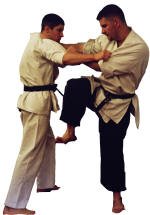
It is very important to use hikite (opposite pull with your arms) and to use whole body weight. This is pretty devastating technique. Even if you miss opponent’s knee, you can smash his shin or foot.
Tips: When executing sokuto don’t look down, because this will reveal your intention. Fix your eyes on opponent eyes.
Reference kata: Pasai, Anan, Sanseiryu
 SOKUMEN GERI
SOKUMEN GERI
spear leg
This technique was more widely used in old days. Toe tip is used as contact area when kicking into opponent’s abdomen.
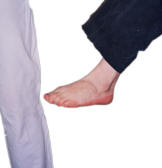
Although sokumen geri looks not practical and painful, in fact is very effective. Of course, this kick is more dangerous when you have shoes on.
Tips: You can’t use same amount of power in sokumen geri as in simple mae geri. This is most common mistake. Instead of power, you should be very quick and accurate.
Refrence kata: Useishi, Chinto…
OLD MAN CARIES A FISH
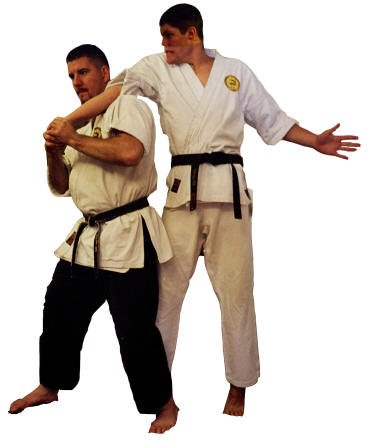 juji uke
juji uke
This elbow lock technique is part of kushanku kata. Movement in kata is displayed as jodan juji uke and turn. Similar drawing exists in Bubishi.

You can use this lock as defense against roundhouse punch or knife attack. It is very important to hold opponents arm very tight.
Tips: Instead of breaking his elbow, you can grab both his arms and throw him on head.
Reference kata: Kushanku
 SHOKEN
SHOKEN
phoenix eye
In ancient Okinawa karate shoken was most basic technique. However, today shoken is replaced by “simple fist”(sei-ken), because it is easier for beginners to learn.

Sho-ken is very painful when attacking opponent’s trunk. Sei-ken should be used when attacking opponent’s nose, but its effectiveness against opponent’s trunk is relatively small when compared with shoken.
Kyusho: throat, armpit, solar plexus, jugular junction, sternum (breast bone).
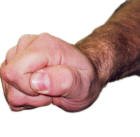
Tips: You don’t have to punch hard with shoken. Instead, you should focus more on fist rotation. With proper rotation you will generate tremendous power.
Reference kata: Seisan
CRANE SPREAD ITS WINGS
 shuto ashi harai
shuto ashi harai
This is one way to use shuto no kamae from kata kushanku – simple take down.

Use your front hand to parry opponent hand attack and seize it with your rear hand. Simultaneously strike his face with shuto and sweep his leg with your thigh.
Similar technique is shown in Bubishi. Like many techniques and variations in Okinawa karate this technique does not have a name, so I will use descriptive names from Bubishi and other Chinese manuscripts.
Tips: Strike to head is more like push.
Reference kata: kushanku
 DRAGONS TAIL
DRAGONS TAIL
escaping technique
This is application from ryu no shita kamae – “Dragon tongue fighting posture” (kushanku).

When someone tries to grab and twist your arm, you should make sudden body turn and whip his face with “iron fist” (tetsui).
Tips: You have to be close to opponent, so that your tetsui can reach his face.
Reference kata: Seisan, Kushanku
 CRANES BEAK
CRANES BEAK
kakushiken
Finger tips can be very dangerous in self-defense. Although there are many finger techniques in Okinawa karate, uechi ryu kakushiken is one of my favorites. This poking technique is aimed at soft targets – eyes, neck, jugular junction
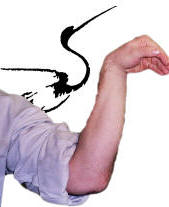
Tips: You can also use this technique as 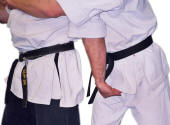 defense against rear grab. This application is part of kata Seisan.
defense against rear grab. This application is part of kata Seisan.
Reference kata: Sanseiru, Seisan
 PREYING MANTIS
PREYING MANTIS
shukouken
This form is part of kata Anan (ryueiryu). It is also found in kata suparinpei.
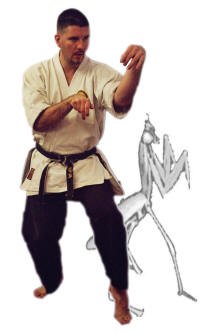

This weapon is also known as “crane’s head”.
Tips: Use your rear hand to make joint lock technique and than smash his face.
Reference kata:
Anan, Superinpei
 TORA GUCHI
TORA GUCHI
mouth of tiger
Tora guchi is very common technique in okinawa karate. It is always performed in neko-ashi dachi (cat stance). Point here is to use your hands in close distance confrontation to grab opponents throat or testicles. This is very effective response in close distance.
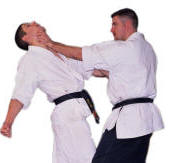 Tips: In kata technique is always performed slowely with lot of power.
Tips: In kata technique is always performed slowely with lot of power.
This isometric contraction 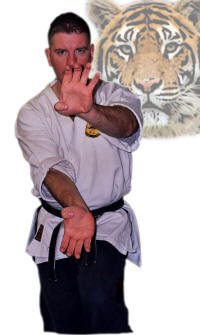 of your muscles will strenghten your arms.
of your muscles will strenghten your arms.
Reference kata: Seisan, Kushanku
 TOMOE NAGE
TOMOE NAGE
great wheel
This technique is illustrated in ancient Bubishi. It is possible that this is one variation from Unshu kata.
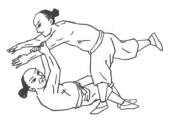
Tomoe nage is ju jutsu term, also known as “sacrifice throw”. Point here is to fall down on a ground and catapult your opponent over your head.
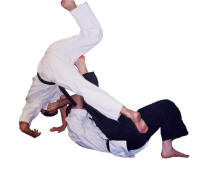
This technique is very effective when you are confronted against stronger opponent who tries to push you holding your lapels.
Reference kata: Unshu
 YOKO EMPI
YOKO EMPI
side elbow smash
Yoko empi uchi is very common technique. Original intention is to defend against hold from back.
Strike is aimed at opponent’s face.
Tips: It is very important to grab opponent’s arm so that you have hikite (to pull him into strike).
Reference kata: Kushanku, Anan
 MAWASHI EMPI
MAWASHI EMPI
roundhouse elbow smash
One more elbow technique. This variation is used when attacker is in front of you.
Parry opponent’s attack, slide into close distance and deliver elbow strike into his face.
Tips: Use your other hand to hold opponent’s head or hair and to pull him into elbow smash. This way you will multiply effectiveness of technique.
Reference kata: Kushanku
 HIRAKEN
HIRAKEN
bears paw
This is old style fist application, also known as kuma-di (“bear paw”).

Point here is to use your front knuckles when attacking opponent’s face. This technique is found in many forms. Here is illustrated application from Sanseiru kata. Knuckles are used against face, ribs and hands.
Tips: You don’t need to use your whole body mass for this strike. Hiraken is used in whipping manner, like backfist and therefore it is suitable in close distance confrontation.
Kata reference: Sanseiru, Jion
TUITE
“dragon hands”
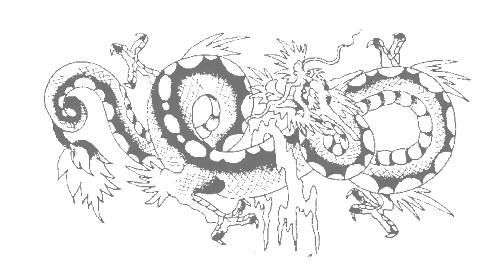 Term tuite or torite became very popular in recent years. However, there is no precise definition of tuite. We can say that tuite represents set of various grab-pull-poke-tear techniques that are hidden in okinawan karate forms. These “jujutsu like” techniques are often not part of official curriculum. They are like spice, you add little according to your taste, but it is not main meal. This is matter of experience or expertise.
Term tuite or torite became very popular in recent years. However, there is no precise definition of tuite. We can say that tuite represents set of various grab-pull-poke-tear techniques that are hidden in okinawan karate forms. These “jujutsu like” techniques are often not part of official curriculum. They are like spice, you add little according to your taste, but it is not main meal. This is matter of experience or expertise.
FINGERS
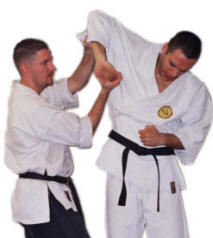
There are many variations of finger locking techniques. Usually you will hyper-extend or hyper-rotate finger. Thumbs can be also hyper-flexed. These are very painful techniques which will help you to really subdue you opponent.
HAIR PULLING
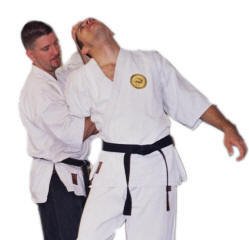
There are many variations of finger locking techniques. Usually you will hyper-extend or hyper-rotate finger. Thumbs can be also hyper-flexed. These are very painful techniques which will help you to really subdue you opponent.
POKING
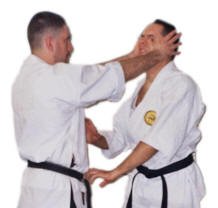
You can poke opponent’s eyes, jugular notch, under jaw or armpit. Pokes are very painful but this will not stop your attacker. Pokes are used more like distracting techniques.
TEARING
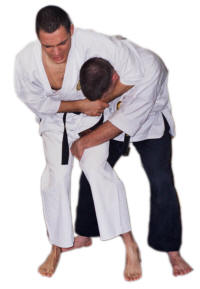
In Okinawa karate it is very important to strengthen your fingers and hands. In close distance you can easily tear opponent’s throat or genitals. You can also use as distraction tearing opponents skin (triceps, thigh, abdomen side).
DIRTY TRICKS
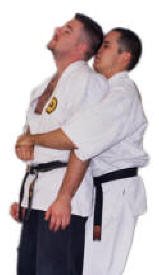
There are many dirty tricks in karate, usually transmitted orally as hidden techniques of kata. Few examples: head strike, throwing send into opponents eyes, hip bump against back hold (kushanku), pretending to surrender (suirakan kamae – pasai), pretending to be drunk (useishi).
JOINT LOCKING
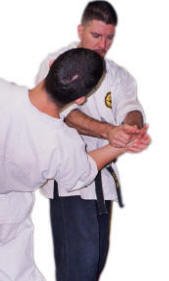
In reality if opponent don’t want to surrender, you will only subdue him with painful joint locking techniques. Twist and break his elbow or hand. Chocking techniques are also very good as controlling technique.
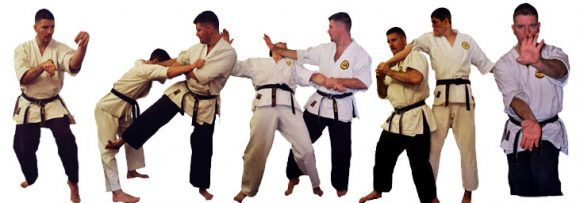
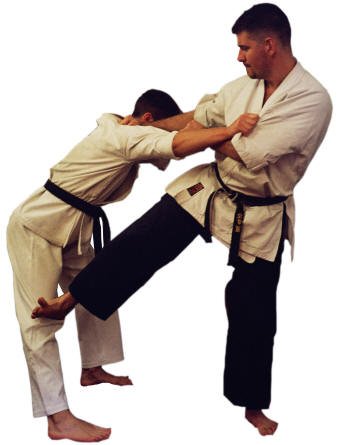 SOKUTO GERI
SOKUTO GERI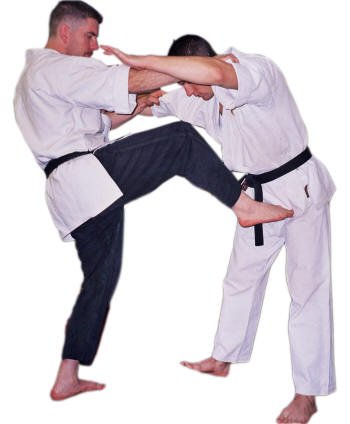 SOKUMEN GERI
SOKUMEN GERI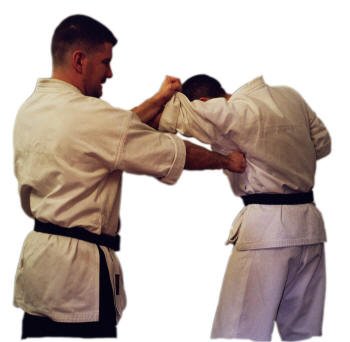 SHOKEN
SHOKEN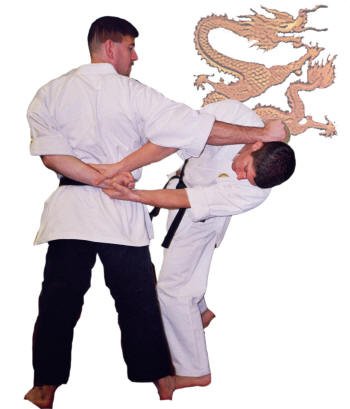 DRAGONS TAIL
DRAGONS TAIL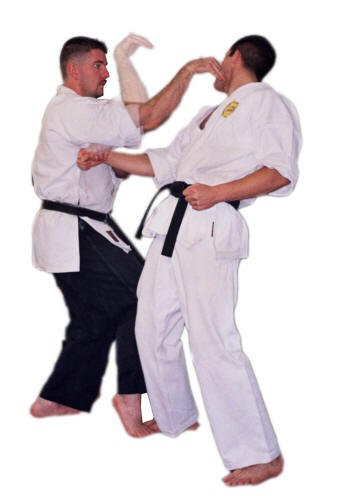 CRANES BEAK
CRANES BEAK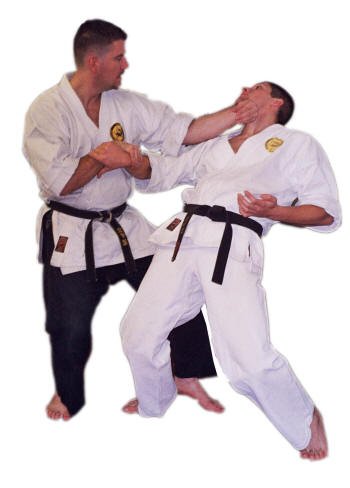 PREYING MANTIS
PREYING MANTIS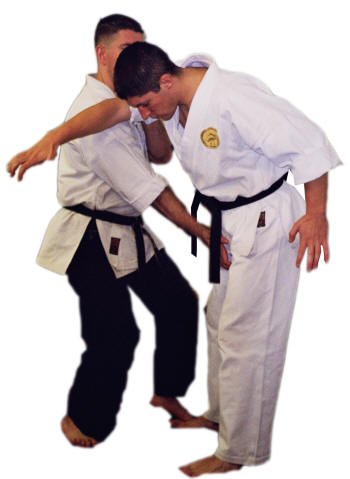 TORA GUCHI
TORA GUCHI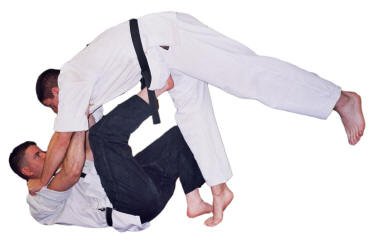 TOMOE NAGE
TOMOE NAGE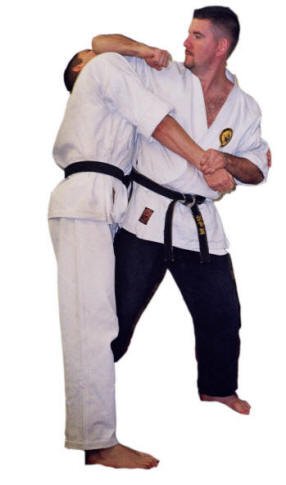 YOKO EMPI
YOKO EMPI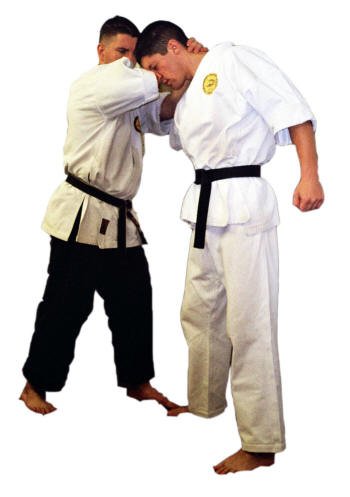 MAWASHI EMPI
MAWASHI EMPI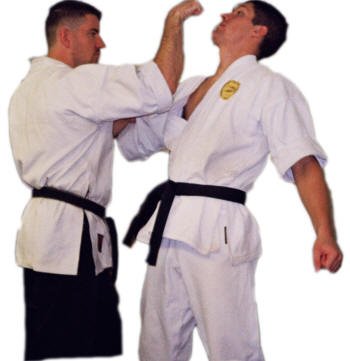 HIRAKEN
HIRAKEN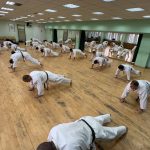


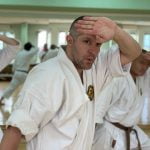

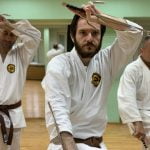
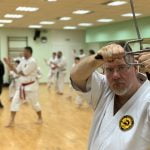

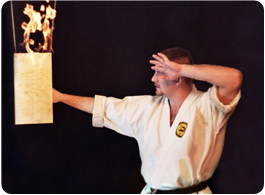

love your content